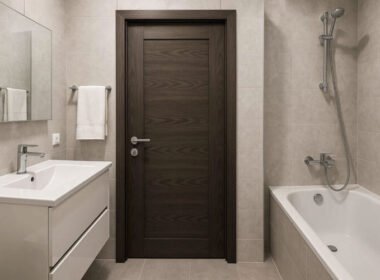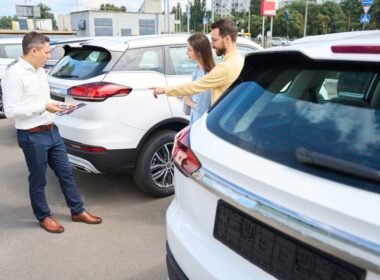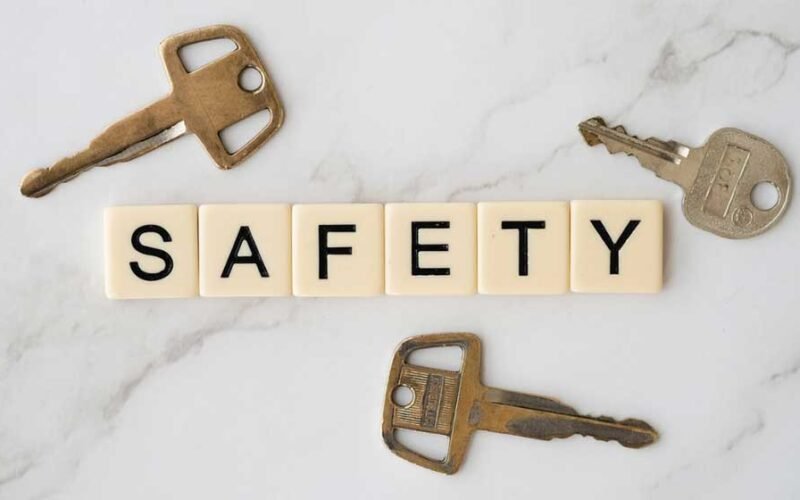Maintaining personal and home safety has become more and more important over the years, with public and private safety incidents unfolding worldwide. Personal and home safety has become increasingly complex too, observes American Heritage Properties Management.
With technology offering new tools for security, it also brings new vulnerabilities. Navigating this landscape requires a blend of modern innovation, traditional practices, and proactive strategies.
Understanding the Modern Safety Landscape
Technology has revolutionized how we approach security, offering smart locks, surveillance systems, and digital alerts.
Yet, with these advancements come new vulnerabilities and unique challenges that we’re still trying to navigate fully. Cyber threats, natural disasters, and overlooked physical vulnerabilities, in particular, are now significant concerns.
Digital Risks
The digital world poses security risks that extend into our physical lives. Hackers can exploit weak passwords, unprotected networks, or compromised devices to access private information, potentially leading to identity theft or home intrusions. Securing your digital life with things like strong passwords, regular software updates, and two-factor authentication, is critical.
Natural Disasters
While technology can help monitor weather patterns and seismic activity, the physical structure of your home also plays a vital role in your home’s safety.
For instance, living in an earthquake-prone area, like California or Hawaii, requires thoughtful preparation. You must take steps to safeguard your home from earthquakes in these places, like securing the house’s frame to the foundation with steel bolts and using shatterproof glass for all windows.
Overlooked Physical Vulnerabilities
Physical vulnerabilities, like poorly maintained garage doors, are often forgotten but can create huge safety risks. For example, a malfunctioning garage door can compromise security by becoming an access point for intruders. Worn-out garage doors can also cause sudden accidents and breakdowns.
You can avoid these consequences by getting regular maintenance on your garage door. Regular maintenance will improve your home’s energy efficiency and may also boost your property’s value. Renovations can also help create an overall safer home.
By understanding all of the risks above, you can better identify and address potential weak points in your safety plan.
Balancing Tech-Savvy and Traditional Security Measures
Adopting smart technology can enhance your home security and improve your quality of life. Devices like video doorbells, motion detectors, and smart locks provide unparalleled security and peace of mind.
Modern devices like security cameras and app-controlled alarm systems allow for real-time monitoring and swift responses to threats. These systems are especially valuable when integrated with features like facial recognition or geofencing. These features can speed up security checks and ensure only those you assign access to your systems have it.
As powerful a tool as smart home technology is for home safety, relying solely on technology isn’t enough.
Pair tech-powered security measures with traditional safety methods like neighborhood watch programs and well-lit entryways. This fosters community awareness and deters potential intruders.
The combination of modern tools and age-old practices creates a layered defense system, providing maximum protection for your home and loved ones.
Personal Safety
Personal safety is often framed through the lens of societal norms, which can sometimes work against us. Something may be deemed safe for one person while considered unsafe for another.
For instance, societal expectations for politeness can create dangerous scenarios. In particular, women are encouraged to prioritize politeness over their instincts—even when it compromises their safety.
Women often feel obligated to engage with a stranger for fear of harassment. Or, they have to decline to act assertively in uncomfortable situations because it can lead to compromised safety. This societal pressure can condition women to remain silent and just let things happen, compromising their mental health and emotional wellness.
For women and everyone struggling with personal safety, understanding how to set boundaries is a start. Here are a few practical strategies for personal safety to put in place to feel more confident and safe in the world:
- Trust your instincts:If something feels off, prioritize your gut feeling over social conventions.
- Set clear boundaries: Use firm but polite language to signal discomfort, such as, “I’m not comfortable with this conversation.”
- Learn self-defense: Basic self-defense techniques can help you feel confident and avoid dangerous situations.
- Stay aware:Avoid distractions like your phone when walking alone, especially at night.
Empowering yourself with these strategies can help you navigate challenging situations while staying safe and confident.
Proactive Security for a Safer Future
Achieving personal and home safety in a tech-driven era requires thoughtful planning, constant assessment, and a balance of modern and traditional methods.
Integrate smart devices with community-driven practices and maintain your home’s physical infrastructure to create a safe environment for yourself and your loved ones. Proactive planning not only reduces risks but also fosters peace of mind.
Be sure to regularly review your safety measures and stay informed about the latest tools and techniques. With knowledge, preparation, and confidence, you can build a safer future for yourself and those you care about.










